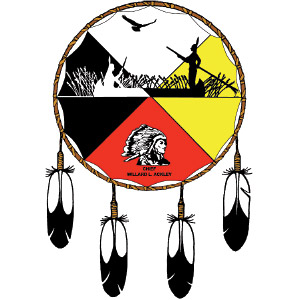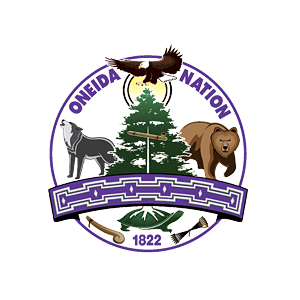
The Enduring Spirit: How the Oneida Nation of Wisconsin Forged a Path of Resilience and Prosperity
Nestled alongside the bustling city of Green Bay, Wisconsin, lies a nation whose history is a profound testament to resilience, adaptation, and an unwavering commitment to self-determination. The Oneida Nation of Wisconsin, a sovereign Indigenous government and a vibrant community, embodies a journey from displacement and near-extinction to a powerful force for economic development, cultural preservation, and environmental stewardship in the 21st century. Their story is not merely a local narrative but a microcosm of the broader Indigenous experience in North America: a struggle against assimilation, a fight for sovereignty, and an inspiring triumph through ingenuity and spirit.
The Oneida’s roots stretch back centuries, as one of the original five (later six) nations of the Haudenosaunee Confederacy (Iroquois), a sophisticated political and social alliance that governed a vast territory in what is now upstate New York. Their traditional lands were characterized by a deep connection to the earth, a communal way of life, and a governance system that predated and influenced aspects of the U.S. Constitution. During the American Revolutionary War, the Oneida, unlike many of their Haudenosaunee brethren, sided with the American colonists. This allegiance, while forging an early bond with the nascent United States, ultimately proved to be a mixed blessing.
In the aftermath of the war, the Oneida faced immense pressure from land-hungry settlers and the state of New York. Despite treaties ostensibly protecting their lands, a series of forced cessions and illegal land grabs drastically reduced their territory. By the early 19th century, with their traditional way of life increasingly untenable, a significant portion of the Oneida people began a diaspora, seeking new lands and a fresh start. Their journey led them westward, eventually acquiring land in what was then Michigan Territory, a region that would later become Wisconsin.
This migration, occurring primarily in the 1820s and 1830s, marked the beginning of the Oneida Nation of Wisconsin. They established a new community, working to rebuild their lives and culture on unfamiliar soil. However, the respite was short-lived. The westward expansion of the United States continued unabated, bringing with it further federal policies designed to dismantle tribal governments and assimilate Indigenous peoples. The most devastating of these was the Dawes Act of 1887 (General Allotment Act), which broke up tribally-held lands into individual allotments, ostensibly to encourage farming but primarily to open up "surplus" land to non-Native settlers.
The impact on the Oneida was catastrophic. "The Dawes Act was designed to destroy our communal way of life, to turn us into individual landowners, and ultimately, to make us disappear," explains Loretta Metoxen, a respected Oneida elder and historian. "We went from holding nearly 65,000 acres of land to less than 1,000 acres in trust by the mid-20th century. It was a calculated act of dispossession that almost shattered us." This period, often referred to as the "allotment era," saw the Oneida’s land base dwindle to a fraction of its original size, scattering their community and eroding their economic foundation. Poverty became widespread, and cultural practices were suppressed.

Yet, the Oneida spirit, forged through centuries of adaptation, refused to be broken. The mid-20th century brought a new era of Indigenous activism and the federal policy of "self-determination," replacing the destructive policies of termination and assimilation. This shift provided a crucial opening for the Oneida to begin the arduous process of rebuilding. They reorganized their tribal government, established a modern constitution, and embarked on a long, often frustrating, legal and political battle to reclaim their sovereignty and economic independence.
A pivotal moment arrived with the passage of the Indian Gaming Regulatory Act (IGRA) in 1988. This federal law, acknowledging the inherent right of tribal nations to conduct gaming on their lands as a means of generating revenue for governmental services, proved to be a transformative catalyst for the Oneida Nation. In 1993, the Oneida Nation of Wisconsin opened the first tribal casino in the state, the Oneida Casino.
"The casino wasn’t just about making money; it was about reclaiming our destiny," says Tehassi Hill, former Chairman of the Oneida Nation. "It was about creating the resources to care for our people, to educate our children, to provide healthcare, and to preserve our culture. It was about fulfilling our responsibilities as a sovereign government." The Oneida Casino, strategically located near the Green Bay Austin Straubel International Airport, quickly became a significant economic engine, not only for the Nation but for the entire region.
The revenue generated from gaming and other tribal enterprises—which now include hotels, a golf course, retail outlets, a travel plaza, and a diverse portfolio of businesses—has allowed the Oneida Nation to reinvest profoundly in its community. Today, the Nation is a major employer in Northeastern Wisconsin, providing thousands of jobs to both tribal members and non-members.
The impact of this economic self-sufficiency is evident in every facet of Oneida life. The Nation operates its own comprehensive healthcare system, including a modern clinic, dental services, and mental health programs, ensuring access to quality care for its members. Education is a paramount priority, with the Nation funding Head Start programs, K-12 support, scholarships for higher education, and even a tribal school that integrates Oneida language and culture into its curriculum. Housing programs provide safe and affordable homes, and elder care facilities ensure that the Nation’s respected elders live with dignity. Social services, youth programs, and cultural centers further strengthen the fabric of the community.
Cultural preservation and revitalization are at the heart of the Oneida’s mission. The Oneida language (Onyota’a:ka), once critically endangered, is experiencing a resurgence through immersion programs, adult language classes, and the development of digital resources. Traditional ceremonies, such as the Green Corn Ceremony and the Midwinter Ceremony, are celebrated with renewed vigor, connecting current generations to the spiritual and agricultural heritage of their ancestors. Art, storytelling, and traditional crafts are actively promoted, ensuring that the rich tapestry of Oneida culture continues to thrive.
"Our language is our identity," states one Oneida language instructor. "It carries our worldview, our history, and our connection to the land. Every word we teach, every song we sing, is an act of sovereignty and an act of love for our people."
Beyond its internal development, the Oneida Nation is also a recognized leader in environmental stewardship. Guided by the traditional philosophy of being "guardians of the land" for future generations, the Nation has implemented ambitious programs for sustainable agriculture, water quality protection, and land management. They are active participants in regional environmental initiatives, often partnering with state and local agencies to protect and restore natural resources. Their commitment extends to addressing climate change, understanding its disproportionate impact on Indigenous communities.
Despite their remarkable achievements, challenges remain. The Oneida Nation continues its efforts to reacquire and place ancestral lands back into trust, a complex and often contentious process. Historical trauma, a legacy of centuries of oppression, continues to impact community health and well-being, necessitating ongoing healing and support programs. The constant vigilance required to maintain sovereignty in the face of shifting political landscapes and external pressures is an ever-present reality.

Nevertheless, the Oneida Nation of Wisconsin stands as a powerful testament to the enduring spirit of Indigenous peoples. From the displacement of their New York homelands to the devastating impact of allotment, they have not only survived but have flourished. Their journey illustrates that self-determination, when coupled with cultural strength and strategic vision, can transform historical adversity into a vibrant, self-sufficient future. As they continue to build upon their successes, the Oneida Nation remains a beacon of hope and a living example of resilience, proving that sovereignty is not just a legal concept, but a powerful, living force for cultural continuity and community prosperity.


